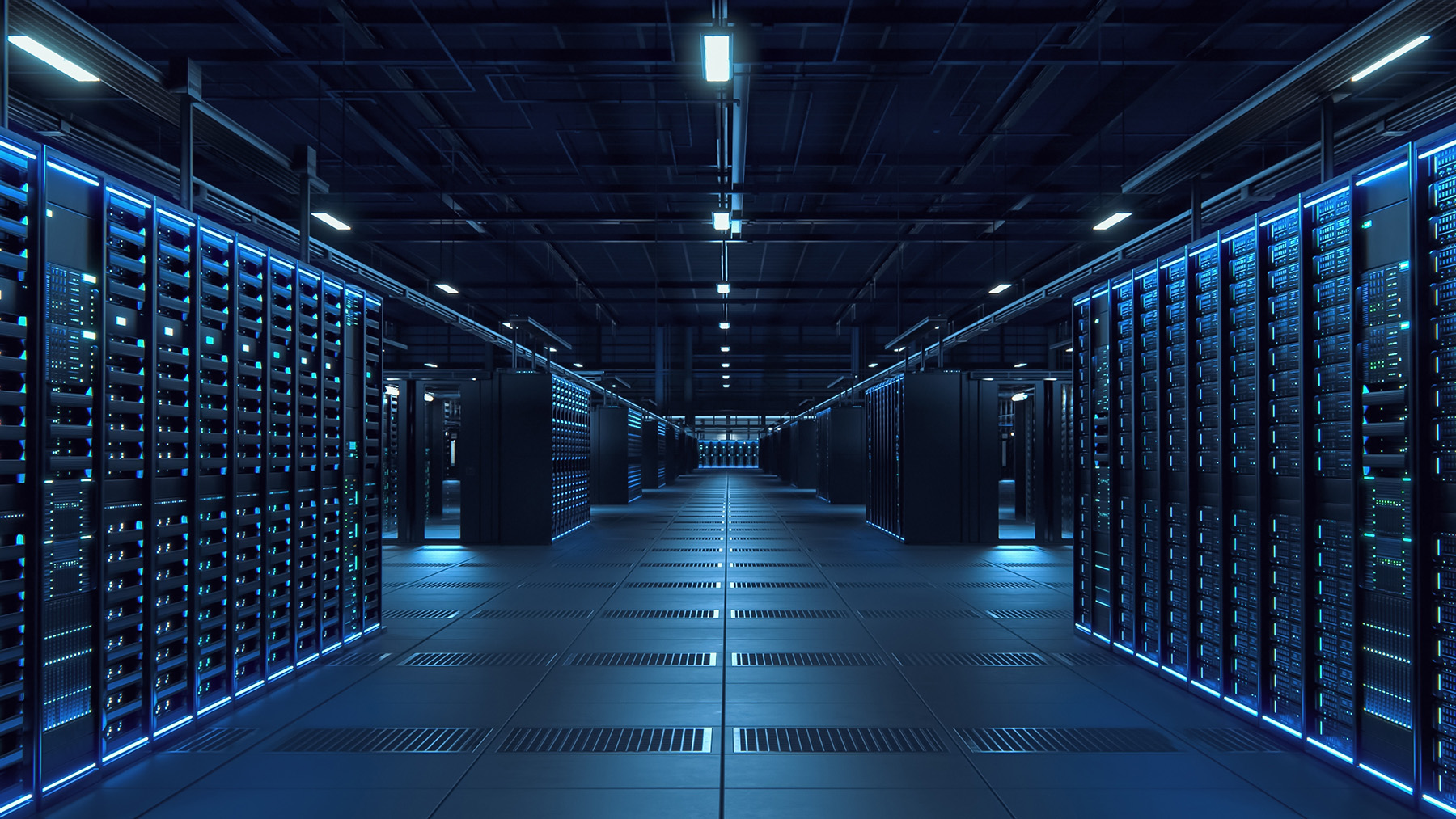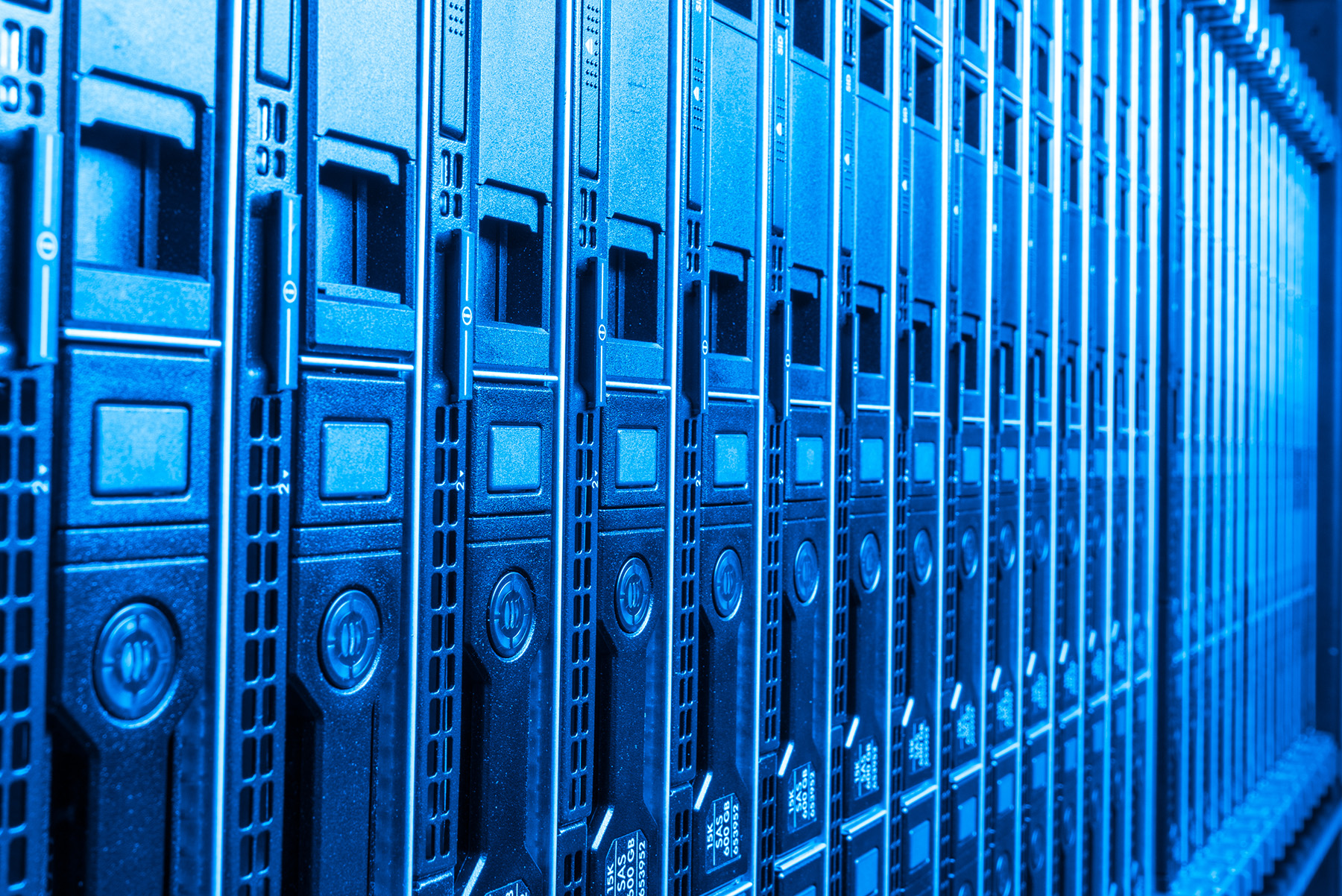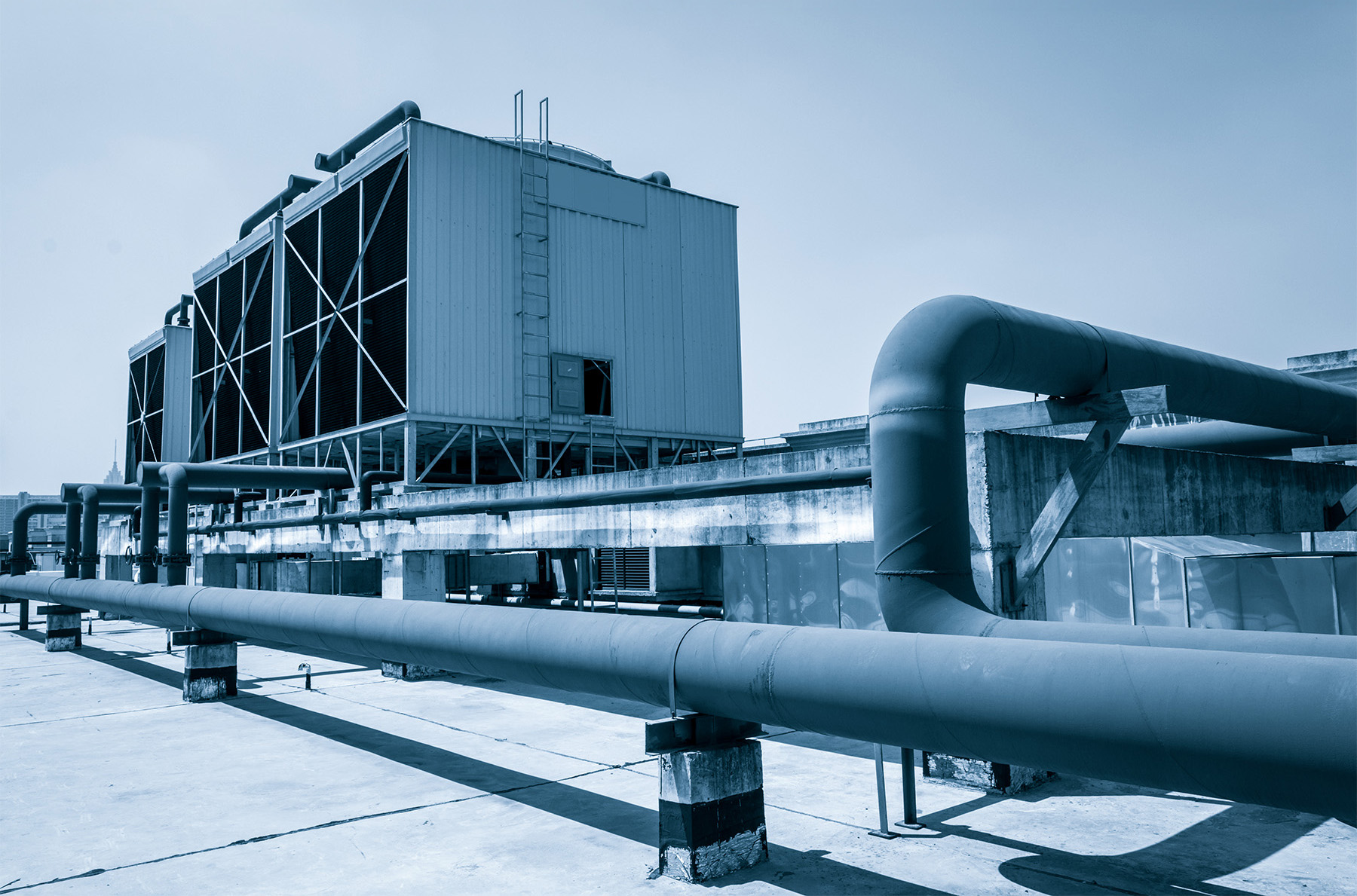
By Rasheed Ahmad, Ph.D., P.E., M.ASCE
Data centers are increasing in number and in their environmental footprint — especially in terms of water demand. This primer explores how such facilities present new opportunities and challenges for civil engineers.
The enormous growth of digital data worldwide — which by 2025 is expected to increase 146-fold compared to 2010, according to the United States International Trade Commission’s May 2021 report “Data Centers Around the World: A Quick Look” — has likewise led to an urgent need for more data centers. These facilities contain the servers, routers, switches, storage systems, and other equipment that run continuously to meet what seems to be an ever-expanding demand for cloud-based computing, digital storage, artificial intelligence, digital gaming, streaming music and movies, data analytics, and other services.
The U.S. is a global leader in the data center industry, with more than 5,300 facilities, according to information from Statista.com, a global data and business intelligence platform. Although the 24/7 operation of these data centers, which are often housed in massive buildings, makes the digital world possible, the industry also consumes enormous amounts of resources, especially water. That water is used in two primary ways: indirectly, to generate the electricity that the data centers need to operate, and directly, as a liquid coolant to dissipate the heat generated by the servers and other data center equipment.
The exact amount of water consumed by individual data centers is difficult to determine because there is very little data publicly available for research and analysis. Moreover, that water demand can be controversial, especially because of the negative impact that data centers can have on the communities in which they are built. In The Dalles, Oregon, for example, a lengthy legal battle ultimately revealed that Google data centers in the region consumed more than 355 million gal. of water in 2021 — an amount that had tripled since 2016 — representing more than one-quarter of the town’s annual water consumption, according to the February 22, 2023, article “Google’s water use is soaring in The Dalles, records show, with two more data centers to come” on The Oregonian’s OregonLive website.
Collectively, data centers rank in the top 10 of “water-consuming industrial or commercial industries” in the U.S., according to a study led by Landon Marston, Ph.D., P.E., M.ASCE, an assistant professor of civil and environmental engineering at Virginia Tech. That study — “The environmental footprint of data centers in the United States,” published in May 2021 in the journal Environmental Research Letters — also noted that the data center industry “directly or indirectly draws water from 90% of U.S. watersheds.”
Moreover, Marston estimates that 20% of those data centers “draw water from moderately to highly stressed watersheds in the western U.S.,” according to a February 2022 Virginia Tech media advisory titled “Researcher explores how proliferating data centers affect water supply in the United States.”
Consequently, it is critical for data centers to use water as efficiently and productively as possible — a fact that data center operators often do not acknowledge.
Opportunities and challenges
For civil engineers, helping data centers manage their water consumption represents a relatively new field that offers various opportunities and challenges. The article “Water Efficiency Opportunities for Data Centers,” by Mikeal Vincent, P.E., a water sustainability lead at Black & Veatch, states that data center operators need to monitor their use of water but often do not. Vincent cited a 2021 survey by the New York City-based Uptime Institute that found that only 51% of data center operators track their water usage, and even those that do monitor it, do so mostly at individual sites. Only 10% track water use across all their facilities. Uptime is an advisory organization that certifies digital infrastructure performance standards for data centers around the world.

Why don’t more data center operators monitor water usage? More than 60% say there is no “business justification” to collect that information, according to the Uptime survey. The situation may be changing, however, as a “growing number of municipalities will permit new data center developments” only if they are designed to minimize direct water consumption, Uptime explains.
Toward that goal, whether the data center operator is evaluating a new site or expanding an existing facility, one of the first steps should involve a water balance study. As Black & Veatch explains on its website document, “Water Management for Data Centers,” such a study would evaluate the data center’s water demand, assessing all possible sources, including surface water, groundwater, brackish water, seawater, reclaimed water, and other types. The study should also consider climate, data center design, the possible cooling systems, the use of reclaimed or recycled water, and treating or using reclaimed effluent or discharge water.
In addition to water issues, the selection of the site for a new data center would involve other critical concerns (see “Finding the Right Site,” below).
Data center sizes vary significantly, from as small as 1,000 sq ft to more than 1 million sq ft, but the average size is about 100,000 sq ft. The interior layout of data centers, and the piping or other infrastructure for the cooling system therein, are generally the purview of mechanical engineers and experts in heating, ventilation, and air-conditioning systems. The water-focused work of civil engineers typically involves calculating the site’s potential water consumption and designing the infrastructure to bring water into the data center and discharge that water after it has been used.
Water consumption calculations rely on multiple factors, including the data center’s location, the number and arrangement of server racks, the fire suppression system, the quality of the water available, and the number of staff members in the building and what their water needs might be for bathrooms, emergency showers, and other uses. Computer models also help the engineers determine the sizes of pipes coming into and going out of the data center building, as well as the optimal water pressure.
What sort of water?
The location of the data center is critical because facilities in especially hot regions, such as Arizona, will obviously require more cooling than data centers in cooler places, such as Maine. In terms of server arrangements, if the back sides of the racks — where the heat is exhausted — face each other, it is easier to collect and expel the resulting hot air. In some designs, the ceilings are higher above the backside aisles so that the hot air will rise and move away from the servers. Likewise, the floors on which the servers sit can feature openings to help cooler air circulate around the equipment.
Data centers can use numerous water supply sources, including potable water, treated effluent, or reclaimed/recycled water. The quality of the cooling water, however, can affect the equipment’s useful life. Reclaimed water, for example, can cause more corrosion, scaling, and microbiological growth in the equipment than does potable water. To better understand the available water supply, engineers must communicate with the local water utility regarding the results of seasonal sampling, pH levels, conductivity, total dissolved solids, chlorides, silicon, hardness, alkalinity, and microbial counts, among other factors. Depending on those results, engineers might ask the utility company if it can treat the water further or recommend to the data center operator that it consider a different source. In some situations, the data center might source from two utilities and thus have the option of drawing water from each or both systems.
At the very least, the data center should install a loop system that features at least two waterlines that connect to the building — in the front and back, for instance — so that the cooling water supply can continue to flow into the facility even if one of the lines malfunctions. Emergency water tanks, combined with on-site generators, can also guarantee a dual supply of water in the event of a power outage or problem with the utility’s water supply.
Such emergency tanks are often large and underground. One data center project in the American Southeast that the author worked on prior to joining Black & Veatch — for which he helped construct a hydraulic model of the pipe network and performed hydraulic modeling scenarios, among other efforts — wanted to install a two-day supply of water for emergencies. Since that facility generally consumed 2 million gal. a day, it required at least 4 million gal. of storage on-site. For context, facilities with at least 10 million gal. of stored emergency water are not uncommon.
Effluent engineering
What goes into the data center as cooling water must then come out — which provides civil engineers the opportunity to design wastewater systems for these facilities. Data centers generate two main types of wastewater effluents: domestic wastewater and cooling effluent, which are discharged to the water utility’s sewer system. The domestic wastewater represents a relatively limited flow, as it comes from an on-site area.
Cooling effluents are the largest share of this wastewater, representing primarily the condensates from the cooling system. And because the water is used cyclically, in the cooling process, effluent often concentrates certain pollutants such as total dissolved solids and chloride, which are not normally targeted for removal by municipal wastewater treatment plants.
Utility companies are also increasingly requiring data centers to pretreat their wastewater before discharge. This means data centers will likely require the equivalent of a mini water treatment plant on-site. The design of such filtration systems provides civil engineers with another opportunity to help data centers manage their water systems. At the data center in the American Southeast mentioned earlier, the roughly 10,000 sq ft facility features a water-cooled system with a looped design that can be fed from two directions. The system relies on potable water from the local drinking water treatment plant but also has a separate water supply line for its fire hydrants and fire suppression system. The cooling effluent is conveyed through a wastewater gravity pipe connected to the municipal sewers.
Since it was difficult to predict exactly how much cooling effluent volume would be produced, the system was designed initially to accommodate roughly 20%-30% of the total water supplied. A flowmeter was installed to monitor the actual wastewater flows.

At a roughly 1.3 million sq ft Google data center in Douglas County, Georgia, the facility relies on recycled treated wastewater for cooling. Using its own purpose-built system, the Google data center takes treated effluent from the local water and sewer authority’s treatment plant and further treats the effluent to make it reusable. This recycled water is then pumped to the data center through a few miles of pipeline. The data center also has on-site water storage and can switch to the county’s potable water supply for short-term periods in case of emergency.
This data center also has a National Pollutant Discharge Elimination System permit to treat its own wastewater on-site instead of discharging it to the municipal sewer. The technology has adequately served the cooling needs of this data center for several years and reportedly has been used as a prototype for other Google facilities around the world.
Working with utilities
Civil engineers can also help water utilities create master plans that consider future data center development. Master plans have historically focused primarily on expected population growth and often exclude water needs of the data center industry. However, acting as a liaison between the utilities and the data centers, civil engineers can help project current water demands while also anticipating needs that will arise years or decades in the future.
On the data center side, resilience and redundancy are also growing concerns. Some data center operators are asking their water utilities to provide information on water reliability, asset management plans, and resilience plans. Although large water utilities usually have developed such plans, smaller utilities could find such requests a challenge because of a lack of resources. With the growth of data centers, utilities now must work to implement and update their plans — another area in which civil engineers can assist.
Although the designs of data center water systems are somewhat similar to other critical users like airports, hospitals, and public health facilities, the design parameters for data centers are yet to be fully developed. But opportunities exist for civil engineers to help bring meaningful change, minimizing water consumption, waste, and energy usage for cooling.
SIDEBAR: Finding the right site
Selecting a site for a data center is challenging on many levels, taking into account a host of factors, from financing to engineering to community relations issues. In addition to the water supply challenges, these other factors are critical to site selection:
- Environmental conditions: The region’s climate and history of natural hazards are important considerations. For example, incidences of high temperatures, record precipitation, and damaging wind can impact the operations of data centers, making it critical for the site selection process to consider such conditions and put appropriate backups and redundancies in place.
- Seismicity: Seismic events can cause power losses, water main breaks, and damage to buildings, roads, and bridges. Site selection will need to incorporate risk analyses and appropriate mitigation strategies to minimize the impact of seismic events.
- Network connectivity: Traditionally, data centers were far from their clients. But now, providers are constructing data centers closer to where their businesses are. Thus, the availability and cost of fiber and communications infrastructure have become key factors in deciding site, speed, and reliability.
- Land and accessibility: The cost and availability of land and the possibility of future expansions are key considerations. Building and equipping a data center involves moving significant amounts of heavy-duty equipment. The condition of nearby roads and highways can be a significant factor in ensuring safe and efficient transportation. The facility should be safely accessible by road, rail, and air.
- Talent: Although most data centers are remotely managed and operated, there is still a need for core staff in the building. Therefore, the site decision should consider the availability of people with the right skills in the area. Proximity to academic institutions can provide the best access to such technical talent.
- Power: The core operations of data centers require considerable amounts of electricity. Consequently, the site selected must have unencumbered access to reliable and sufficient power sources, whether from the existing grid or new renewable sources.
Rasheed Ahmad, Ph.D., P.E., M.ASCE, is a technical leader in distribution and collection system planning in the Atlanta office of Black & Veatch.
This article first appeared in the March/April 2024 print issue of Civil Engineering as “Keeping Data Centers Cool.”



